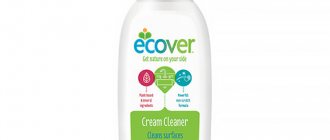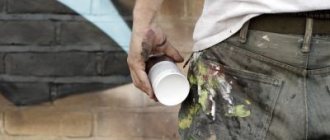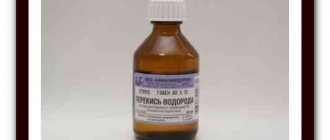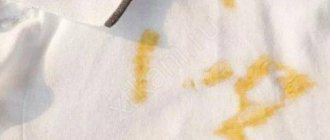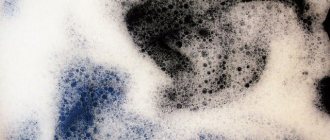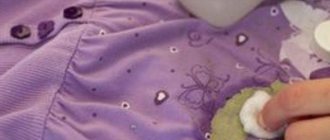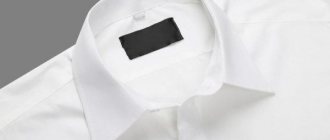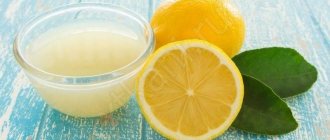There can be many scenarios in which you get an oil stain on your clothes: cooking, eating, a sloppy neighbor, etc. But we are more interested not in the reasons, but in possible solutions to this unpleasant problem.
So, let's try to figure out how to remove oil stains as effectively and painlessly as possible for both the clothing itself and its owner. Let's consider gentle folk methods and more aggressive industrial means.
Folk remedies
If the vegetable oil stain has not yet ingrained itself into the fabric, then you can get by with minor losses. In a good half of cases, you won’t have to spend extra money, because almost every housewife has the ingredients mentioned below in her stash.
Advice! It is very important not to delay washing, because oil stains are very quickly absorbed into the material and will be much more difficult to remove later.
Salt
We will need regular table salt. Sprinkle it on the problem area and leave it to soak for 10-15 minutes. The layer thickness should be at least half a centimeter, so there is no need to skimp on salt. After treatment, be sure to wash the clothes in a machine or by hand.
Advice! Use plain kitchen salt - not iodized. The latter can leave streaks on light-colored items.
Mustard
You can remove oils from clothes using dry mustard. The powder is mixed with a small amount of warm water until a mushy consistency is formed. It is necessary to treat the problem areas with the composition and wait until the mustard is completely dry.
Afterwards, shake off the residue and send the clothes to the wash. If the material is delicate, then it is better to try the method on a small area. The fact is that mustard can slightly change the color saturation of some items made of viscose, Tencel, linen, silk and other finicky fabrics.
Starch
You need to treat problem areas with starch and leave the clothes for about five minutes in a dark place. Just as in the case of salt, you should not skimp on the powder. Afterwards, you need to walk over the sprinkled areas with an iron. The oil stain should go away.
If the problem persists, then the procedure must be repeated, and then send the clothes to the wash. This method is effective in the first half hour of the appearance of an oil stain. If the dirt is old, then it is absolutely useless.
Chalk
Chalk can be used to remove Vaseline and similar oils, but only if they are fresh. This option is great for light-colored and finicky items, such as chiffon, cotton, linen, and silk. Chalk also does a good job of removing stains on jeans .
Advice! It is better to use special purified chalk rather than rough natural chalk. The latter may change the color of the fabric.
The chalk is crushed into a fine powder, and then sprinkled on problem areas in a layer of 2-3 mm. Chalk reacts with an oil stain for quite a long time - about two hours. After the expiration date, it is removed with a wet sponge. The oil should disappear.
Talc
Here it is also very important not to delay and act quickly while the stain is fresh. Regular talc should be poured onto the problem area in a layer of 0.5-1 cm and covered with a sheet of paper on top. Then iron it thoroughly and leave it for 4-5 hours.
Afterwards, shake off the powder from the clothes and wash them. Talc, just like chalk, is gentle on finicky fabrics.
How to remove stains from vegetable, technical and other oils - proven methods
If you are lucky enough to get an oil stain on your favorite clothes, this is not at all a reason to part with them. It’s enough to get acquainted with different ways to remove oil from clothes. Among them there are professional and folk or home remedies that are always at hand, but not everyone knows how to use them. Oil stains are really easy to remove, even if they have become thoroughly embedded in the fibers. Today we’ll talk about how to remove them from various types of fabrics, including wool.
Detergents
Oil stains can be removed using regular dishwashing detergents. The latter do an excellent job of breaking down fat, which also applies to clothing. Apply a small amount of dishwashing liquid to the problem area and let it react for 5-10 minutes.
Next, wash the clothes as usual. The stain should go away. The main thing here is not to overdo it with the dosage. If you apply too much detergent to an area, the material may change color or even deteriorate.
How to remove old stains
To remove old oil stains, you can use table vinegar, hydrogen peroxide, turpentine and gasoline. Particularly difficult stains are a good reason to use combined compounds. There are quite a few possible options, among them are:
- Vinegar and water.
- Salt, ammonia, vinegar.
- Water, salt, ammonia.
The finished reagent is applied to the greasy stain using cotton pads. The mixture should remain on the fabric for half an hour. After this, a cleaning composition is used. Then all that remains is to wash the item in warm water.
Step-by-step algorithm
The procedure directly depends on the chosen method. In any case, preparation is a mandatory step. It is carried out as follows:
- Remove excess oily liquid using napkins.
- Clean things from dirt and dust with a brush.
- Turn the affected item inside out.
- Lay out clothes on a horizontal surface. As a result, contamination should be on top.
- Place a white cotton material under the damaged area.
- Check the reaction of the fabric to the cleaning mixture.
- If there are no negative manifestations, they begin to treat the affected area.
Bleach
Before using bleach, make sure that this method of exposure will not damage the material. The relevant information must be indicated on the clothing label. For example, in the case of jeans, bleach will not only remove oil stains, but also the color.
This is the optimal product for light and pure white things. Bleach must be applied to the contaminated area and, after leaving for a minute, put in the wash. If the stain is old, then the procedure is repeated several times.
Turpentine
Turpentine copes well with oil and greasy stains. But the liquid mixture cannot be used in its pure form. To prepare the product we need laundry soap and ammonia . A regular grater won't hurt either.
Advice! Turpentine does not have the best effect on delicate fabrics, so for silk, linen and other finicky materials it is worth using other methods.
The soap must be cut and dissolved with water in a liter container. Then add 3-5 drops of ammonia and stir thoroughly. Then pour in turpentine (100-150 ml) and rub the resulting mixture onto the problem areas. Leave the clothes for 15-20 minutes in a dark place.
Next, you need to rinse the treated areas with running water and put the items in the wash. If necessary, repeat the procedure.
How to remove oil stains from clothes at home
The source of oil stains on furniture and clothing can be food, massage compounds, or car care products. To restore the damaged product to its original appearance, washing in a machine will not be enough.
The need for immediate treatment of the stain is due to the following reasons:
- Oil and the mixtures in which it is contained are characterized by fluidity. Because of this, already in the first minutes after contact with the fabric, the contamination covers a large area.
- The substance quickly oxidizes. It will be quite difficult to remove an oil stain once it has dried.
To achieve maximum efficiency, many housewives use organic solvents. These include ethanol, gasoline, acetone and kerosene. These substances are used to remove contaminants that originate from vegetable oil. When choosing suitable methods, you should take into account the type of material and available means.
Features of oil stains
Next, we will consider ways to influence old dirt and certain types of oils in particular. The above methods are not suitable for them. The removal procedure in this case will be more labor-intensive, but at the same time more effective.
Sunflower oil
Even if the stain is old, you can try the method with starch and salt. Pour the latter onto the problem area, slightly moisten it and wait half an hour until it is absorbed. Then we wash the clothes in the usual way.
In the case of starch, you need to pour it onto the stain and go over it with an iron. The procedure must be repeated two or three times and only then send the items for washing. Gasoline and acetone are used as heavy artillery for removing sunflower oil stains.
The problem area needs to be treated generously with water. Then dip a cotton swab in gasoline or acetone and walk over the stain. Next, you need to put a regular piece of paper on the problem area and iron it thoroughly. To completely remove the stain, subsequent hand or machine washing is necessary.
Olive oil
Before removing old olive oil stains, clothes should be thoroughly cleaned with a brush or sponge. First, you should try a more gentle method with soda. It not only absorbs dirt, but also unpleasant odors.
Sprinkle the stain with a large amount of soda: at least a centimeter layer and wait 15-20 minutes until the product reacts with olive oil. Next, remove everything with a damp sponge and soak the clothes in neutral powder for 1 hour. Afterwards we carry out the usual washing and there should be no trace left of the stain.
You can also use nail polish remover. This is a more radical method, so it must be used with caution. The main thing is not to pour too much on your clothes, otherwise they will change color or completely deteriorate.
The stain must first be moistened with water, and generously. Next, take a cotton swab, apply nail polish remover to it, squeeze it out if necessary, thereby removing excess, and then treat the problematic surface. Afterwards, blot the stain with a clean cloth (not alcohol) and iron it with a not very hot iron.
After the procedure, clothes must be washed thoroughly. It is best to do it by hand and with laundry soap. In the case of machine washing, you will need a double dose of washing powder.
Sea buckthorn oil
This is an extremely persistent type of stain and is difficult to remove. Sea buckthorn oil almost completely eats into the fabric and leaves behind unpleasant yellow stains. Fresh stains are removed with starch as described above. To get rid of old dirt you will need vinegar or a solvent such as white spirit.
In the first case, you need to prepare a container for soaking, where you add equal parts of warm water and table vinegar. Leave the clothes in the basin for 15-20 minutes and then rinse thoroughly. Next, wash in a machine or by hand. The stain should go away.
Advice! Do not use solvents to remove stains from denim. They corrode the paint and light stains may appear on clothes.
If vinegar does not help, then we use white spirit or a similar solvent. First of all, you need to wet the oily area with water. After dipping the cotton wool in the solvent and squeezing it out, carefully treat the stain. To consolidate the effect, you can iron the problem area with a slightly hot iron through a napkin. Next, wash it in the machine, adding more powder than usual.
Machine oil
Clothes can be damaged not only by vegetable oils, but also by industrial oils. Automotive lubricants are no less dangerous for things than the types of products described above. Starch, soda, salt and other folk remedies are practically powerless in this case. Therefore, here it is worth immediately moving on to more effective methods.
Advice! Clothes stained with machine oil cannot be washed in a machine - only hand wash.
The best option would be acetone or solvent. The procedure is similar to those with vegetable oils: moisten the stain generously with water, treat the dirty area with a swab (acetone/solvent), wipe it with a dry cloth and wash.
Washing powder and laundry soap
You can remove vegetable oil from the carpet with soap and washing powder.
It is difficult to restore the original beauty of fleecy and dense things, because they absorb liquids well. First, you need to moisten the area around the stain to prevent further spreading. Next, you need to carefully blot the center of the contamination with a paper napkin until no greasy marks remain there. The next step is to apply water directly to the stain itself.
To get rid of grease, you should wet a stiff clothes brush with warm water and rub the soap with it. You can also sprinkle a little washing powder on the floor covering and rub the surface with a brush until a thick foam appears. At the end, the cleaning agent is washed off with water.
Carpet products are usually afraid of water. In order not to spoil the thing, you need to put oilcloth and a clean cloth under the carpet.
Stain removers for children's clothes
Experts recommend using hypoallergenic chemicals with a composition that is safe for the delicate skin of a child for children's clothes. In difficult cases, it is less effective than conventional industrial products, but still copes better with removing oil stains than starch, salt and other folk analogues.
The best stain removers for children's clothing:
- "Eared nanny." Russia. ≈ 120 rub.
- Cotico Baby. Russia. ≈ 200 rub.
- "Our mother". Russia. ≈ 300 rub.
The products are suitable for different fabrics, while maintaining the original color of the clothing.
Liquid stain removers
Such products have a more delicate formula, which allows you to remove stains from finicky fabrics, such as linen, silk, viscose, etc. Liquid stain removers are used to treat problem areas, and then wash the clothes as usual. You can also add the product to the machine in a special compartment.
The best liquid stain removers:
- Vanish Oxi Action. Great Britain. ≈ 200 rub.
- Germany. ≈ 400 rub.
- "BOS-Liquid". Russia. ≈ 120 rub.
These products extremely carefully whiten things and restore color saturation.
